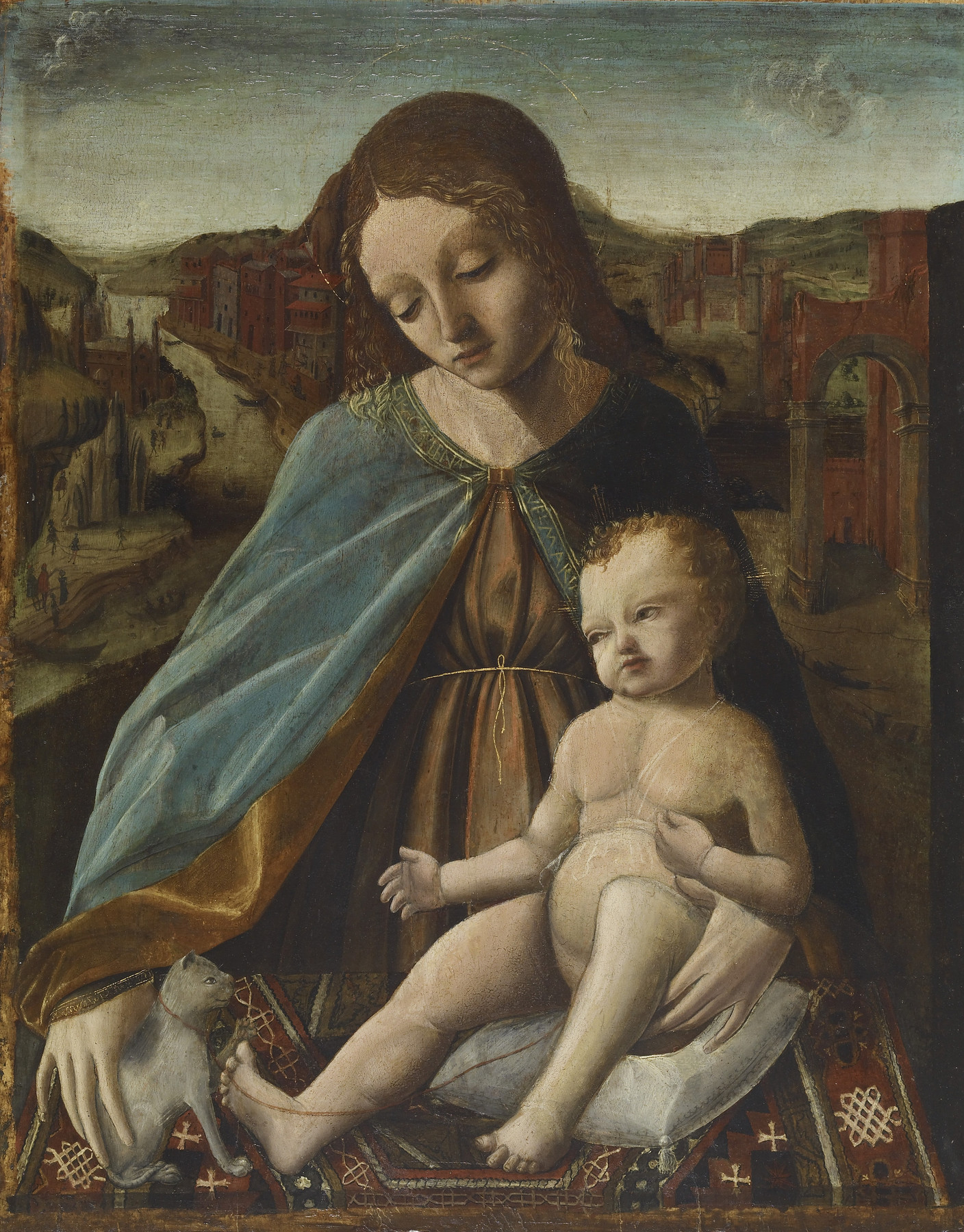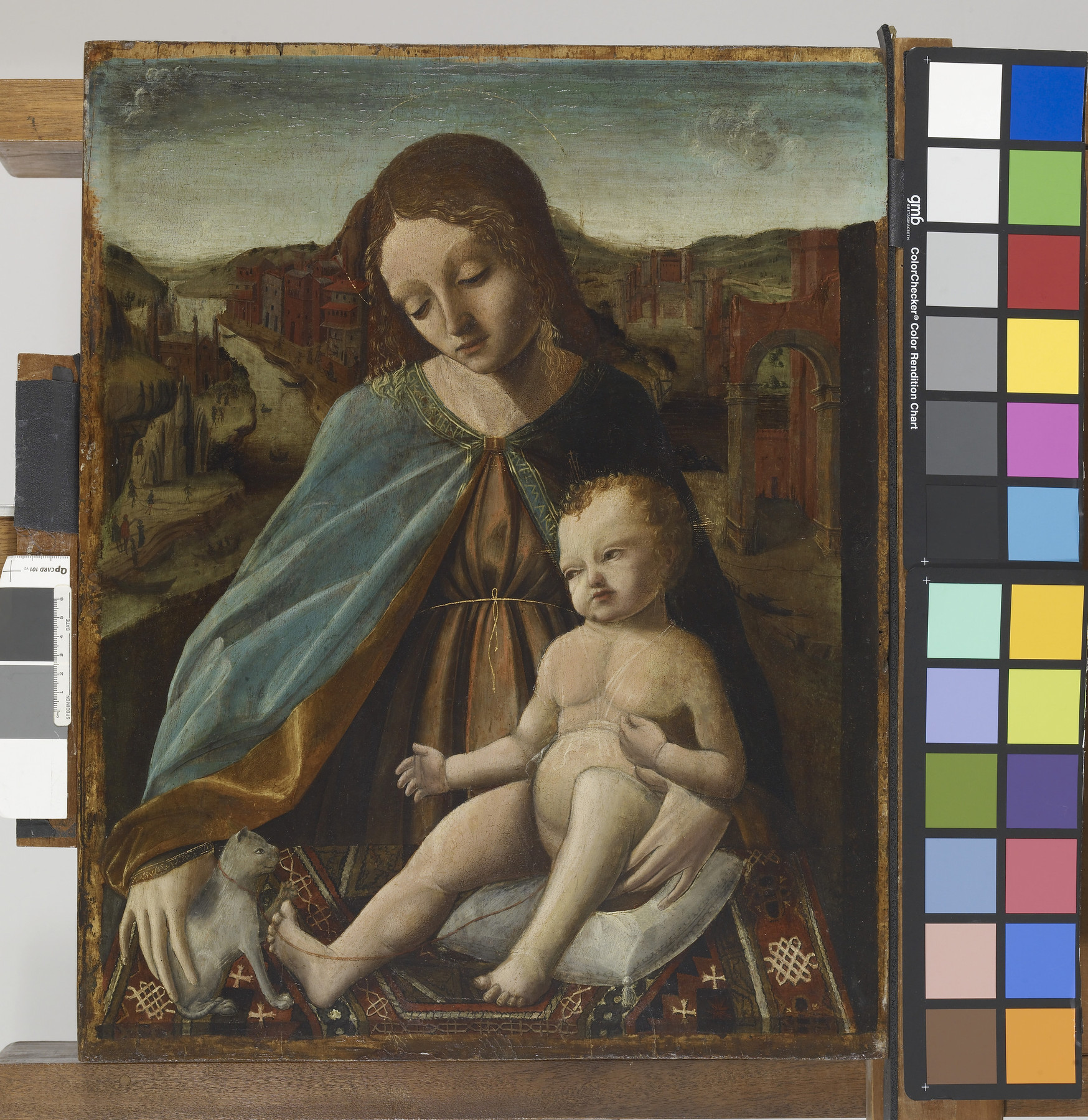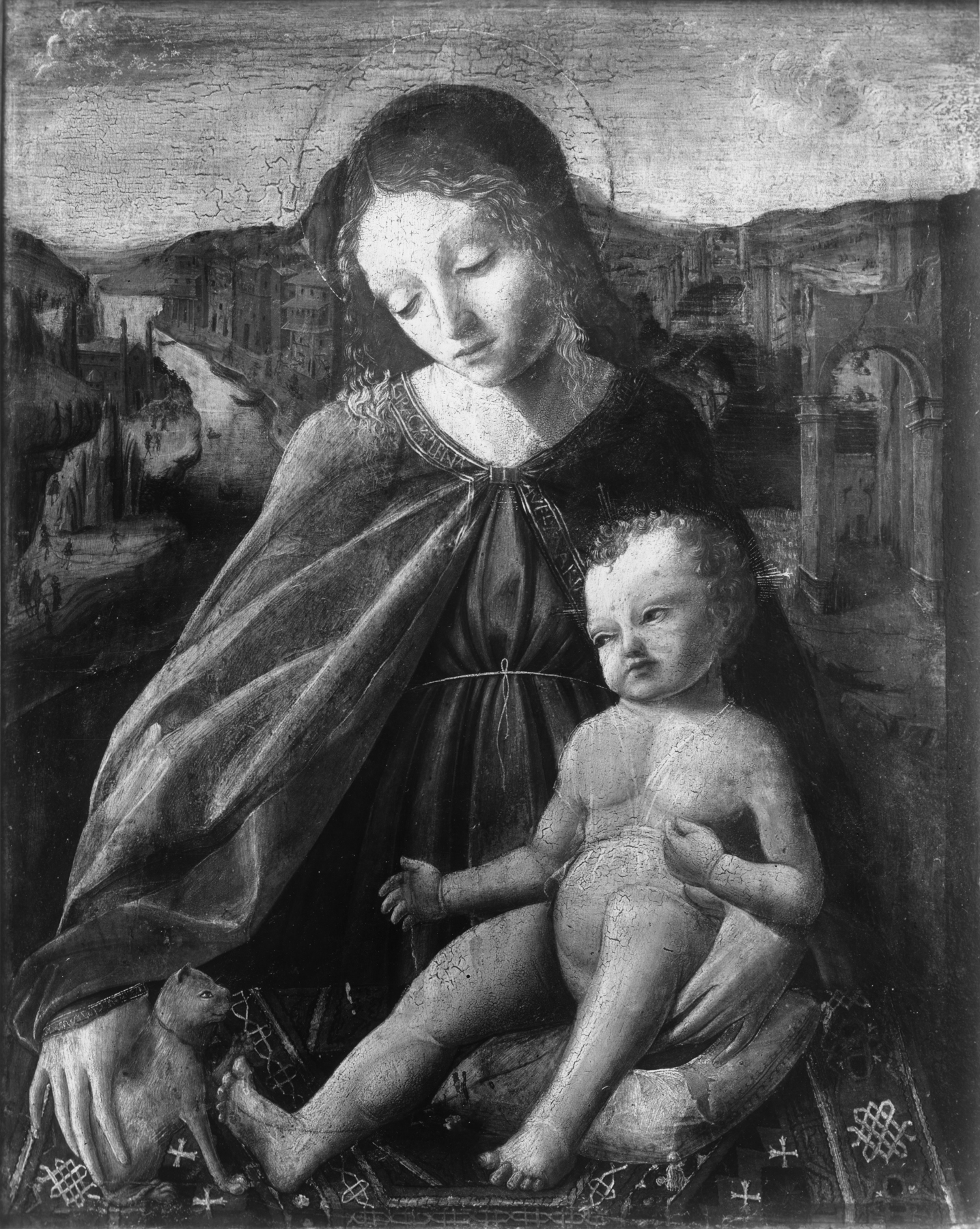Madonna and Child with a Cat
(Renaissance Europe )
This Madonna and Child includes an unexpected visitor—a cat! Rarely depicted in Christian art, cats carry a number of different meanings: since they hunted household pests like vermin and snakes, they were sometimes considered defenders against evil. However, they could also be viewed as sources of evil themselves, on account of their traditional association with witches. Since the cat in this painting appears with the Madonna and Child, it may be a reference to a popular Christian legend claiming that a cat gave birth at the same time that Mary gave birth to Christ. It might also be a heraldic emblem of the family or individual who commissioned the work.
The "Master of the Pala Sforzesca" is a name given by art historians to the anonymous painter of the large “pala" (altarpiece) executed in 1494 for the ruling Sforza family in Milan (now in the Brera Gallery, Milan). Probably trained in the circle of Vincenzo Foppa (see Walters 37.706), he was one of the first artists in Milan to respond to the work of Leonardo da Vinci (1452-1519). Leonardo’s influence can be seen in the Walters’ painting in the Virgin’s head, which is copied from Leonardo’s famous “Madonna of the Rocks" (Paris, Louvre) and rendered in a technique invented by Leonardo called “sfumato” (Italian for “smoky”), meaning light and shade are invisibly blended to make the contours appear soft. The execution is weak and though seemingly dependent on that of the "Master" of the Brera painting cannot actually be by the same hand.
Inscription
Provenance
Provenance (from the French provenir, 'to come from/forth') is the chronology of the ownership, custody, or location of a historical object.
Private collection, Florence, prior to 1912 [mode of acquisition unknown] [Bernard Berenson (?)]; Henry Walters, Baltimore, 1913 [mode of acquisition unknown] [through Berenson]; Walters Art Museum, 1931, by bequest.
Conservation
| Date | Description | Narrative |
|---|---|---|
| 6/22/1957 | Treatment | repaired |
| 7/15/1957 | Treatment | cleaned; coated; filled; loss compensation; reconstructed; varnish removed or reduced |
| 7/15/1965 | Treatment | cleaned; loss compensation; coated |
| 9/29/1987 | Loan Consideration | examined for loan |
Geographies
Italy, Lombardy, Milan (Place of Origin)
Measurements
Painted surface H: 20 13/16 x W: 16 13/16 in. (52.8 x 42.7 cm); Panel H: 21 3/4 x W: 17 3/8 x D: 3/4 in. (55.2 x 44.1 x 1.9 cm)
Credit Line
Acquired by Henry Walters, 1913
Location in Museum
Not on view
Accession Number
In libraries, galleries, museums, and archives, an accession number is a unique identifier assigned to each object in the collection.
In libraries, galleries, museums, and archives, an accession number is a unique identifier assigned to each object in the collection.
37.455






